All about Trees, FODMers Enjoy a Tree Walk
Trees are intriguing in all seasons, FODMers learned on a March 10, 2024, walk led by retired state forester Jim McGlone.
A few highlights:
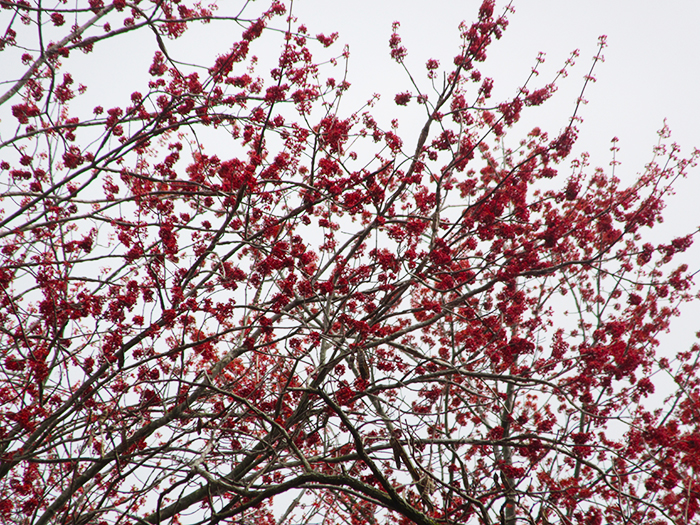 |
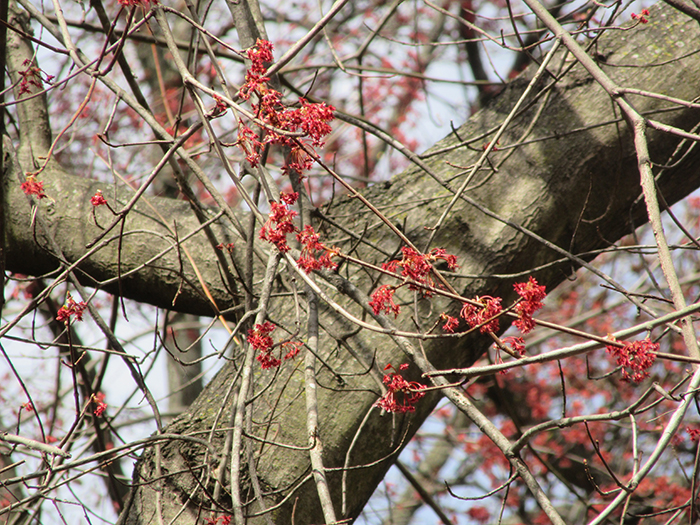 |
| Red maple flowers were bright red. |
- Tree bark varies greatly. The black cherry tree (Prunus serotina) has a scaly bark that looks like “burned potato chips,” McGlone said. Green ash tree (Fraxinus pennsylvanica) bark has a diamond pattern. Sycamore trees (Platanus occidentalis) have patchy, exfoliating bark. As the tree ages, the bark turns white higher up the tree.
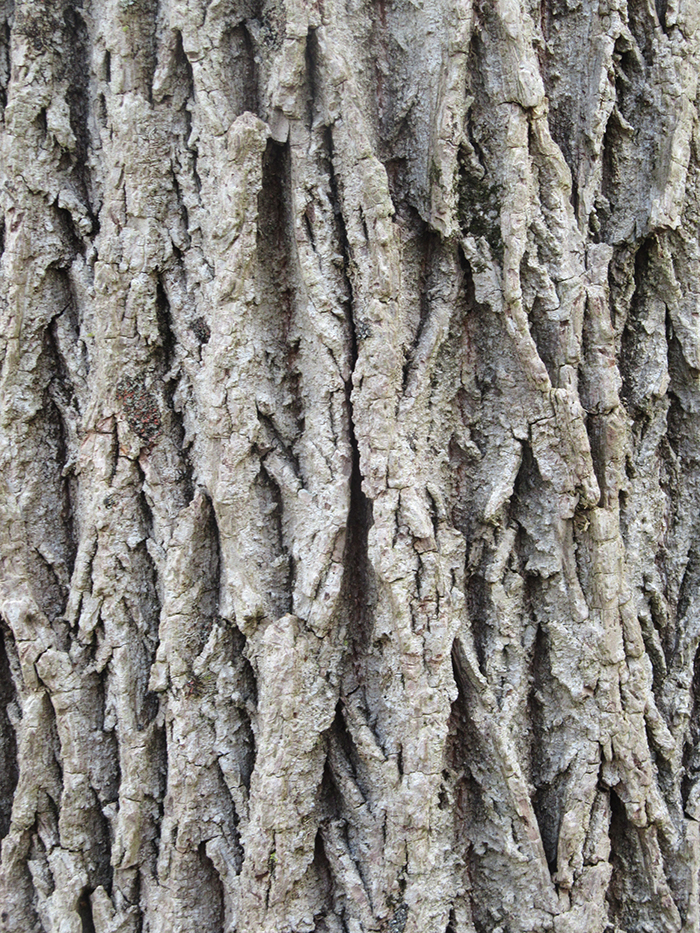 |
| The green ash tree has furrowed bark with diamond patterns. All photos by Glenda Booth. |
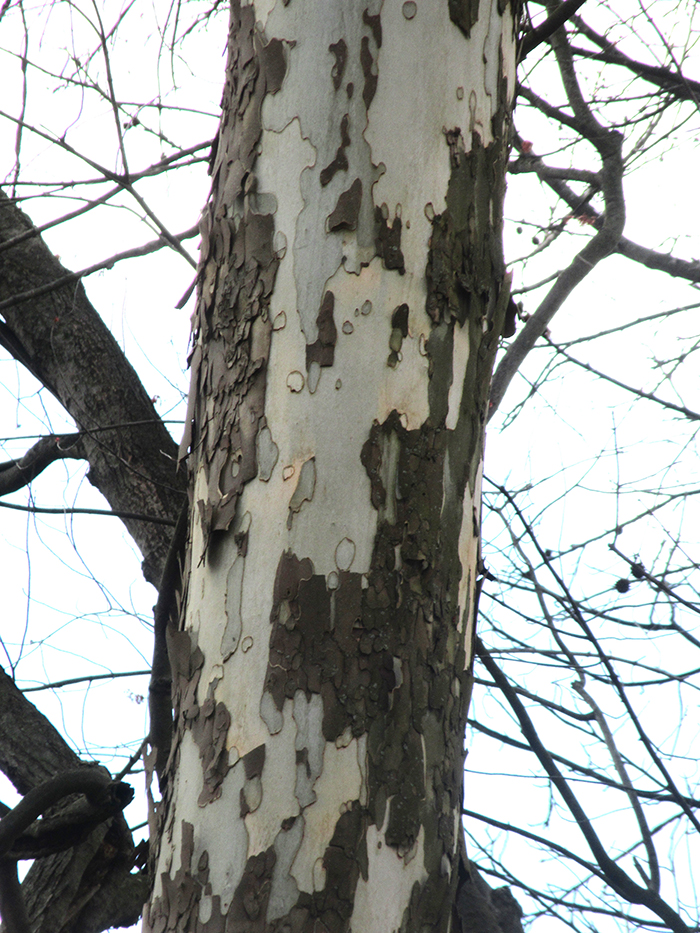 |
| Sycamores have scaly, exfoliating bark. |
| |
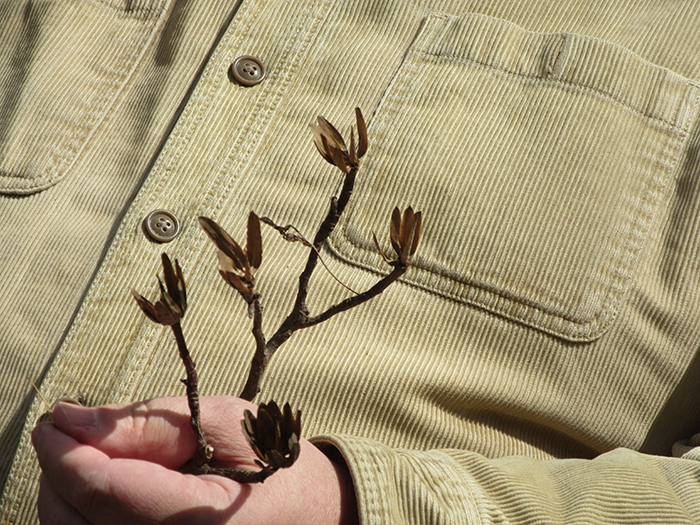 |
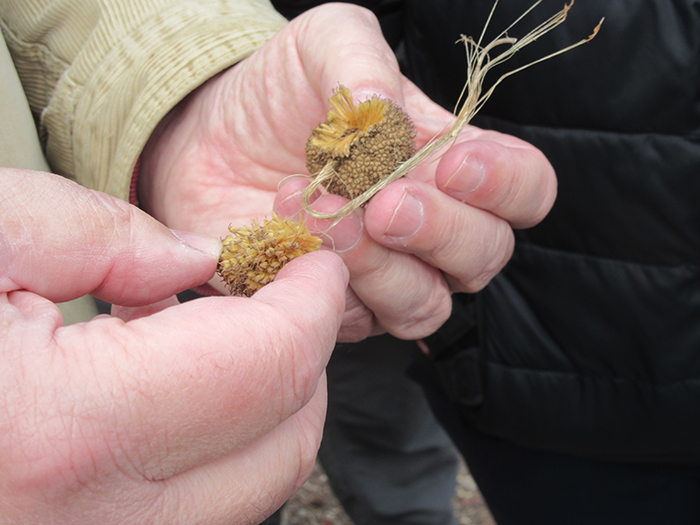 |
| The walk leader, Jim McGlone, showed the group what tulip poplar and sycamore seed pods look like in winter. |
- American sweet gum trees (Liquidambar styraciflua) are easily identifiable by the brown, spiky “balls” that hang on the tree all winter. Finches feed on gumball seeds.
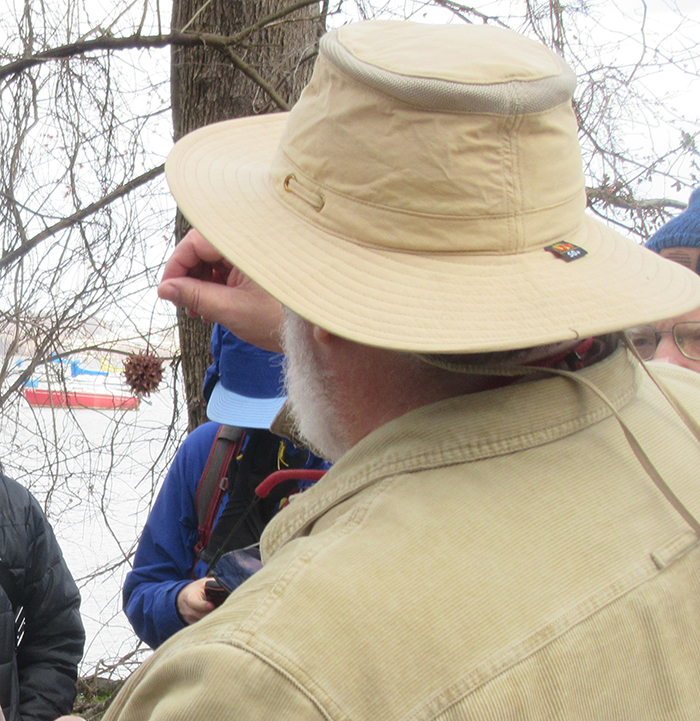 |
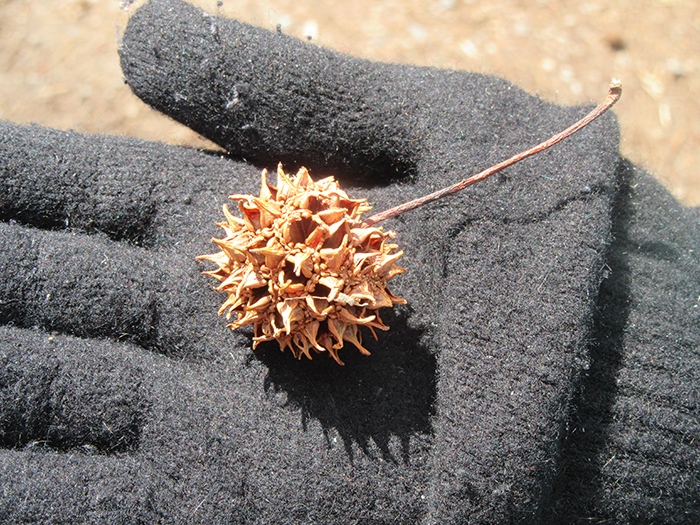 |
| McGlone described the spiky brown fruit of the sweet gum tree that encase the seeds. |
- Female American hollies (Ilex opaca) were sporting red berries. McGlone said that the berries of a typical invasive plant like bush honeysuckle have one to two percent fat content, but native plant berries, like viburnums, typically have 30 to 40 percent fat content. Birds eating non-native seeds generally are “filling up on junk food” which impairs their ability to migrate, he maintained.
- The emerald ash borer (Agrilus planipennis), an insect from Asia that has spread across the United States, is threatening many ash trees. In Dyke Marsh, National Park Service biologists have estimated that as many as 1,000 pumpkin ash trees (Fraxinus profunda) could be affected by this insect. Since 2015, the Friends of Dyke Marsh have financed the treatment of 18 trees and so far, these trees are leafing out each spring. See articles on this website.
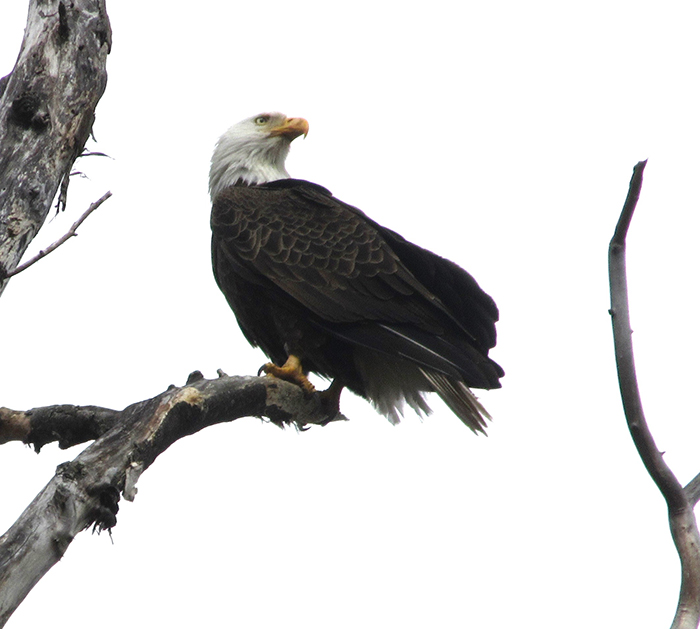 |
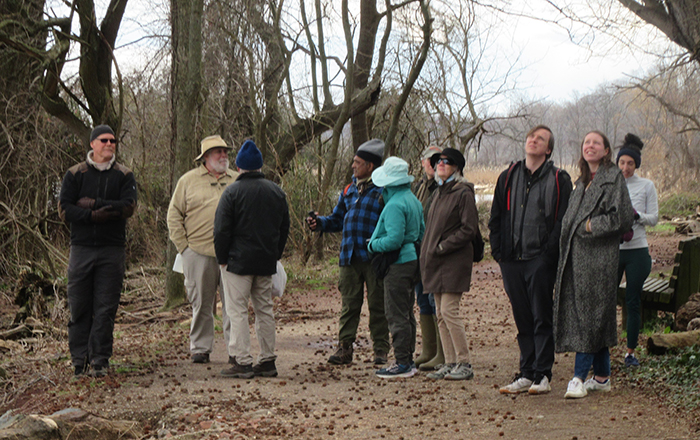 |
| Near the walk’s end, a bald eagle got the group’s attention when it landed in a tree on the trail. |
Click here to read more in this article published in the Connection newspapers on March 14.











 Friends of Dyke Marsh, Inc. is a non-profit 501(c)(3) organization.
Friends of Dyke Marsh, Inc. is a non-profit 501(c)(3) organization.